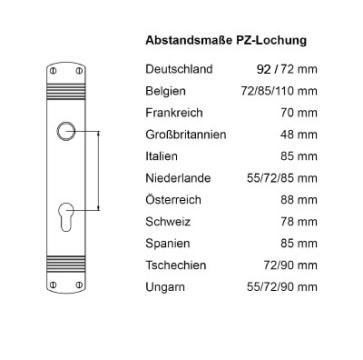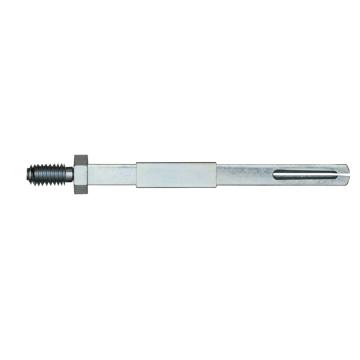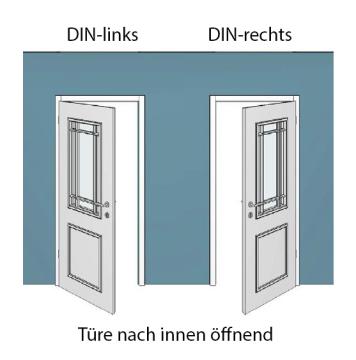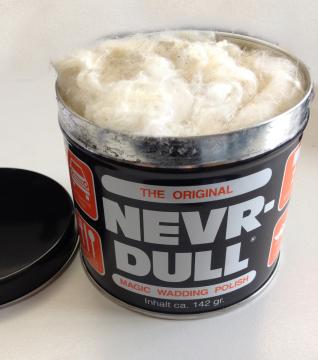Entrance door fitting SEVENTY (D2) - Rosette fitting - Brass
Please select design:
Surface
perforation
garniture type
More information
Description
- Material: solid brass
available as knob/handle-set - outside knob/inside lever handle
available as handle set - outside lever handle/inside lever handle
variable striking direction
knob Ø 50 mm
handle 115 mm
rosettes Ø 55 x 7 mm
rosette thickness 7 mm
including: knob/handle spindle 8/10 and screws
General product information
-
Brass door fittings
Our entrance door fittings are made of solid brass, an alloy of copper and zinc. They are manufactured in our brass foundry using the traditional artisan sand casting process. These entrance door fittings are direct reproductions based on our original models and templates.
Specific product information
-
Knob/handle-set / handle set
Today, entrance door fittings are usually designed as knob/handle-sets. A knob/handle-set refers to the combination of a stationary knob or pull handle on the outside and a moving handle on the inside of the door. The knob and lever handle are connected by a rotatable knob/lever spindle. The door can only be opened from the outside with the key.
The door set can also be manufactured as a handle set. In this design, the door can be opened from the outside and inside with the lever handle, but it is not locked. As a special variant, we also offer these sets with a stationary knob on the outside or with a rotatable knob. Distance / euro profile cylinder perforation
 Entrance door fittings are supplied with euro profile cylinder perforations (abbreviation: PZ) for mortise locks as standard. The door plates have a perforation for the knob or lever handle and a perforation for the profile cylinder. In Germany, there are two standardised distances for this: PZ 92 mm or PZ 72 mm, measured from the centre of the handle hole to the centre of the round part of the cylinder hole. Locks with a euro profile distance of 72 mm are often installed in flat entrance doors. Different dimensions may occur with old locks - other standard dimensions apply in other countries.
Entrance door fittings are supplied with euro profile cylinder perforations (abbreviation: PZ) for mortise locks as standard. The door plates have a perforation for the knob or lever handle and a perforation for the profile cylinder. In Germany, there are two standardised distances for this: PZ 92 mm or PZ 72 mm, measured from the centre of the handle hole to the centre of the round part of the cylinder hole. Locks with a euro profile distance of 72 mm are often installed in flat entrance doors. Different dimensions may occur with old locks - other standard dimensions apply in other countries.
The fittings can also be manufactured with a round cylinder hole (Swiss standard distance 78 mm).
The distance is not relevant for door sets with roses.
The distance is not relevant for door sets with roses.Knob/lever spindle / spindle thickness
 Knob/handle-sets have a rotatable knob/lever spindle that is screwed into the M10 thread of the knob. The pin has a thickness of 8 mm and is supplied with an additional sleeve for a 10 mm lock follower. This allows the delicate shape of the lever handle to be retained in accordance with its historical model. In other countries, different spindle thicknesses often apply.
Knob/handle-sets have a rotatable knob/lever spindle that is screwed into the M10 thread of the knob. The pin has a thickness of 8 mm and is supplied with an additional sleeve for a 10 mm lock follower. This allows the delicate shape of the lever handle to be retained in accordance with its historical model. In other countries, different spindle thicknesses often apply.
Fittings with a lever handle on both sides are supplied with a standard 8 x 8 mm spindle with a sleeve.
The knob/lever spindle is supplied with a length of 100 mm and can be shortened on site with a hacksaw to suit the thickness of your door if necessary.Side of hinges - DIN left / DIN right
 Some lever handles are not symmetrical in shape. In this case, it is necessary to specify the side of hinges of your door when ordering so that the lever handle points in the right direction. For doors that open inwards, the sides of hinges are named as follows:
Some lever handles are not symmetrical in shape. In this case, it is necessary to specify the side of hinges of your door when ordering so that the lever handle points in the right direction. For doors that open inwards, the sides of hinges are named as follows:- standing on the inside of the door, pulling the door open towards you: The door is mounted on the frame on the left side - DIN left side of hinges
- standing on the inside of the door, pulling the door open towards you: The door is mounted on the frame on the right-hand side - side of hinges DIN right
Surfaces
Our brass fittings are available in three different surface finishes:- Brass polished, unlacquered, slightly pre-patinated - gold-coloured - will darken, become slightly duller and more irregular
- Brass shiny nickel-plated - shiny silver-coloured - may become slightly darker
- Brass matt nickel-plated - matt silver-coloured - may become slightly darker
Mounting and security
The historical appearance of our entrance door fittings takes centre stage. They are therefore not tested security fittings. However, all fittings have threaded sleeves soldered to the outer plate or outer rosettes so that mounting is done through the door. The set cannot simply be unscrewed from the outside. The visible screw holes are intended for additional mounting using wood screws and also have a design function.
On request, some of the fittings can be manufactured with a 10 mm thick outer plate (for an additional charge).Surfaces
- Brass polished, unlacquered - gold-coloured - will darken, become slightly duller and more irregular
- Brass shiny nickel-plated - shiny silver-coloured - may become slightly darker
- Brass matt nickel-plated - matt silver-coloured - may become slightly darker
Mounting and care
-
Installation instructions
All assembly work should be carried out by a specialist (carpenter). They have the appropriate special tools and expertise to carry out the mounting without any problems. We accept no liability for damage caused by improper mounting.If you want to do the mounting yourself, here are some tips: The mounting of entrance door fittings requires precise work: The door must be drilled through exactly at right angles at the specified distances in order to be able to insert the threaded screws. The spindle is screwed into the thread of the knob and the supplied sleeve (for locks with a 10 mm follower) is fitted onto the spindle. The knob/lever spindle is inserted through the lock follower and the knob long plate or the knob on rose is fitted. For precise alignment of the backplate, it is advisable to insert the profile cylinder in advance. The inside plate is placed on the door and loosely screwed to the outside plate using the threaded screws. If the screws or knob/lever spindle are too long, they can be shortened with a hacksaw. The lever handle is placed on the spindle and loosely mounted to the spindle using a grub screw. Only when the plates or roses are precisely aligned is the final mounting carried out. Door plates or roses are then mounted on the door leaf using additional wood screws.
Care instructions
 Brass is alive! We always deliver brass fittings unlacquered. The surface will darken slightly, becoming more irregular and more vibrant in colour. The door fitting develops its own patina and approaches the appearance of original historical fittings. If you wish, you can polish the fitting from time to time. We recommend Nevr Dull® polishing pad for this purpose.
Brass is alive! We always deliver brass fittings unlacquered. The surface will darken slightly, becoming more irregular and more vibrant in colour. The door fitting develops its own patina and approaches the appearance of original historical fittings. If you wish, you can polish the fitting from time to time. We recommend Nevr Dull® polishing pad for this purpose.
Nickel-plated surfaces are sensitive to acids. They should only be cleaned with a mild detergent and a soft cloth.












































